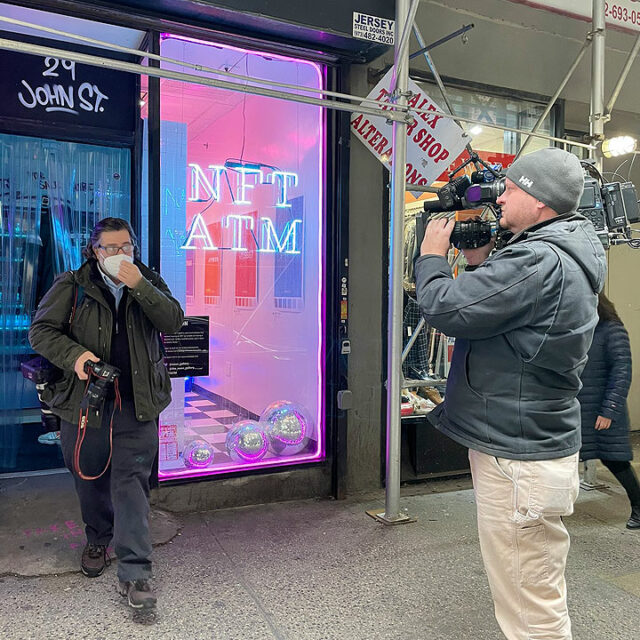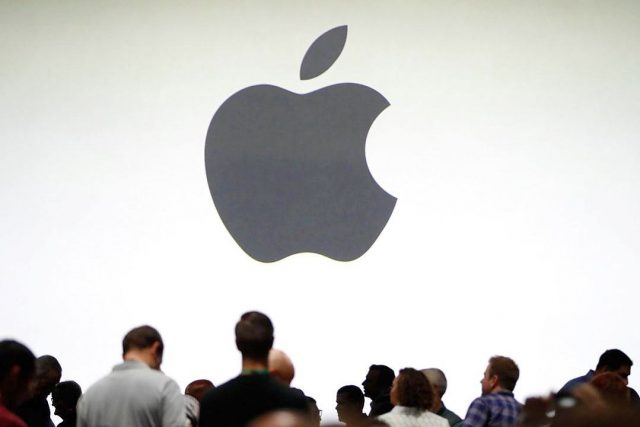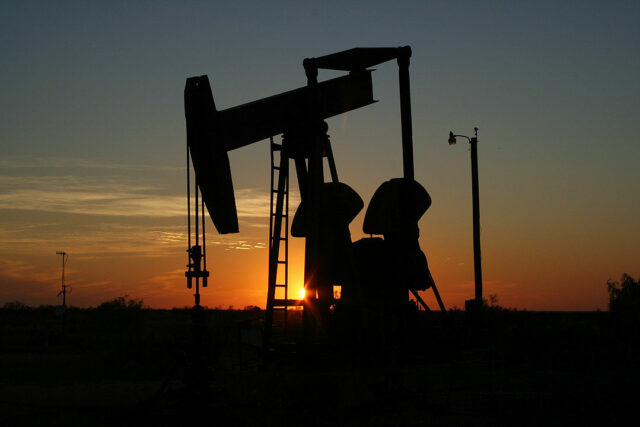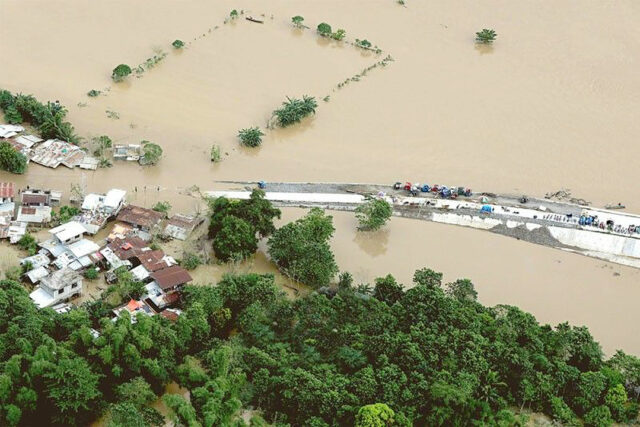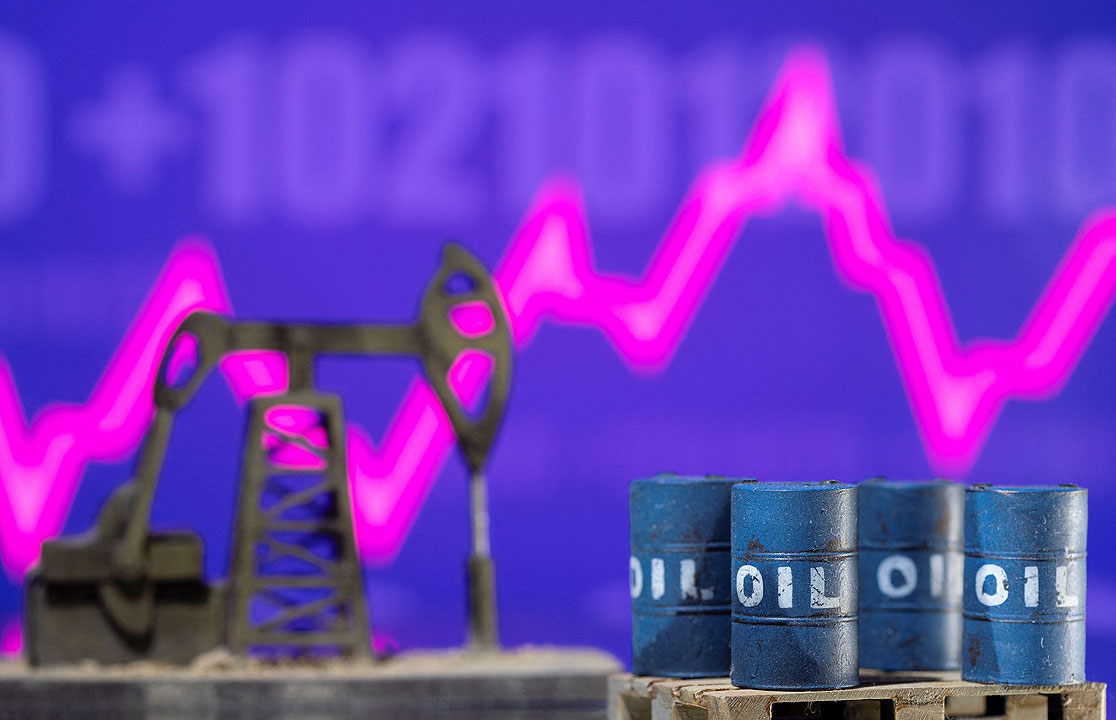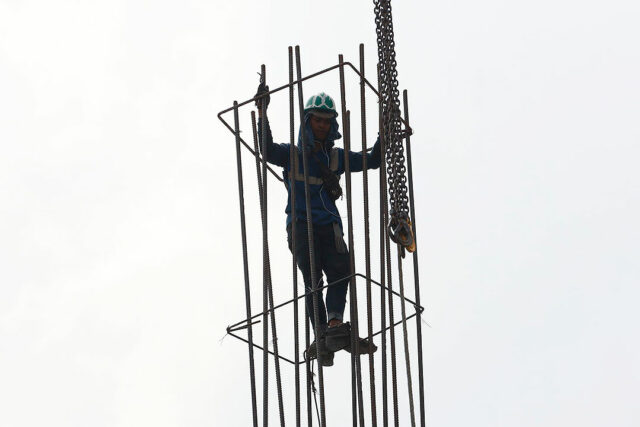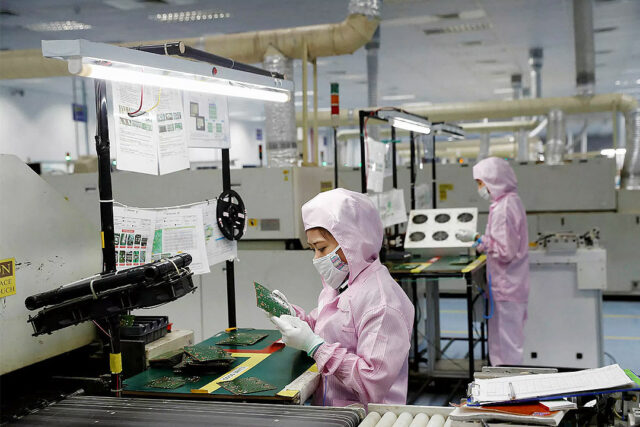MILAN — The latest wave of sanctions on Russia over its Ukraine invasion has thrown the global banking industry deeper into turmoil, as Western countries try to squeeze Moscow’s access to cash for its economy and international trade.
Some Russian banks will be excluded from the SWIFT international payments system and, crucially, other sanctions target the country’s central bank to stop it from using its foreign reserves.
The moves aim to undermine Moscow’s ability to weather the wider economic sanctions but they also impact Western banks which are exposed to Russia’s economy.
The European arm of Sberbank, Russia’s biggest lender, faces failure, the European Central Bank has said, after a run on its deposits sparked by the crisis.
In Europe, Italian and French banks have the largest Russian exposure, representing just over $25 billion each at the end of September, followed by Austrian banks with $17.5 billion, data by the Bank of International Settlements (BIS) show.
The exposure of US banks totals $14.7 billion, according to BIS data.
Following are some of the banks with significant Russian exposure.
US BANKS
CITIGROUP INC.
The US bank on Monday said its total exposure to Russia amounted to nearly $10 billion.
Citigroup listed Russia as 21 among its top 25 country exposures with $5.4 billion of loans, securities and funding commitments at end-2021 — 0.3% of overall exposures based on a regulatory filing.
On Monday, Citigroup gave more details, taking the count for “total third-party exposure” to $8.2 billion. That includes $1.0 billion in cash at the Bank of Russia and other financial institutions and $1.8 billion of reverse repos.
Citigroup also said it has $1.6 billion of exposures to additional Russian counterparties outside of its Russian subsidiary that are not included in that $8.2 billion.
As a comparison, Goldman Sachs Group Inc reported in a filing last month $293 million in net exposure to Russia, as well as a total of $414 million of market exposure as of December 2021.
EUROPEAN BANKS
RAIFFEISEN BANK INTERNATIONAL (RBI)
The Austrian lender’s Russian business ranks as the country’s ninth largest bank by loans. With overall assets of 15.8 billion euros, it employs around 8,700 staff to serve more than 4.5 million customers.
Its equity of 2.4 billion euros represents 18% of consolidated equity.
RBI has operated in Russia since the collapse of the Soviet Union and its business there contributed almost a third to the group’s net profit of 1.5 billion euros ($1.66 billion) last year.
RBI’s Russian exposure totalled 22.85 billion euros, more than half relating to the corporate private sector, it said in its 2021 results presentation.
Russia’s central bank accounts for 8% of RBI’s exposure to the country, sovereign entities for 4% and Russian banks for 2%, based on the presentation.
The overall figure comprises 11.6 billion euros in customer loans (or 11.5% of the group), more than 80% of which are in Russian rubles.
Cross-border exposure to Russia is only 1.6 billion euros with no parent funding from Vienna. Raiffeisen also holds 2.2 billion euros in loans to Ukrainian customers.
Provisions against losses cover 64.3% of RBI’s impaired exposures in Russia.
RBI Chief Executive Johann Strobl told Reuters this week that the group’s Russian subsidiary “had a very strong liquidity position and [was] recording inflows.”
SOCIETE GENERALE
Societe Generale started doing business in Russia in 1872 then left the country in 1917, the year of the Bolshevik revolution, to return in 1973. It has 1.5 million local customers.
Societe Generale, which controls Russian bank Rosbank, had 18 billion euros of overall exposure to Russia at the end of last year – or 1.7% of the group total.
That includes both on- and off-balance sheet items (for example a credit line that has not yet been tapped).
Of SocGen’s Russian exposure, 39% is to the corporate sector and 36% to retail. Sovereign entities account for 21%, financial institutions for 4%.
Actual loans grew 13.3% last year to 10.5 billion euros.
Its Russian retail business — to which 1.05 billion euros of capital was allocated on average last year — produced 115 million euros in 2021 net income, up from 37 million euros in 2020. Including financial services, net income at SG Russia was 152 million euros, versus 76 million in 2020.
The bank said it had implemented measures to adapt to the new sanctions and that Rosbank continued to operate in a “safe manner.”
UNICREDIT
The Italian bank’s Russian subsidiary ranks as the country’s 14th largest bank. UniCredit Russia’s 2.3 billion euros in equity accounts for 3.7% of the group’s total.
UniCredit’s “exposure at default” relating to Russia totaled 14.2 billion euros as of mid-2021.
Of that, around 8 billion euros are loans extended by the Russian arm and locally funded.
The rest includes off-balance sheet items and cross-border loans mainly granted by UniCredit SpA towards large corporates outside of Russia.
UniCredit said last week its Russian franchise accounted for only around 3% of group revenues and provisions covered 84% of its non-performing exposures.
INTESA SANPAOLO
Italy’s biggest bank has financed major investment projects in Russia, such as the Blue Stream gas pipeline and the sale of a stake in oil producer Rosneft. It handles more than half of all commercial transactions between Italy and Russia.
Intesa’s loan exposure to Russia was 5.57 billion euros at the end of 2021, or 1.1% of the total.
Its subsidiaries in Russia and Ukraine have assets, respectively, of 1 billion euros and 300 million euros, which together represent just 0.1% of the group’s total assets.
ING
The Dutch bank has around 4.5 billion euros in outstanding loans with Russian clients and around 600 million euros with clients in Ukraine, out of a total loan book worth more than 600 billion euros.
ING said many sanctions against Russia had been in place since 2014. — Valentina Za/Reuters


